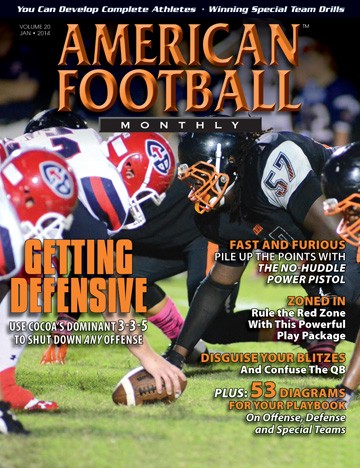Article CategoriesAFM Magazine
|
Safety First: Deadly Opponentby: AFM Editorial Staff© More from this issue MRSA can be your team’s most dangerous adversary unless you take steps to prevent it. In the last decade, a new and threatening disease has emerged in football programs everywhere – MRSA. What is MRSA, why are football settings especially vulnerable, and what can you do to minimize the threat to your athletes? MRSA stands for methicillin-resistant Staphylococcus aureus, a strain of staph bacteria that does not respond to conventional antibiotics. The infection usually first appears as a rash, a pimple or boil on the skin that can be swollen and painful. If not detected and properly treated, it can rapidly expand in size, lead to serious complications such as pneumonia and even spread throughout the bloodstream with tragic results. While MRSA had been known to primarily afflict patients in hospitals and nursing homes as long ago as the 1970’s, health professionals have seen an alarming rise recently in cases in the community, especially among athletes in contact sports such as football and wrestling. In the last several years, outbreaks of MRSA have been documented on NFL teams, universities and high schools nationwide. Just this past season, three players from the Tampa Bay Buccaneers were stricken with the infection. Reported incidents in high schools are too numerous to list. In athletic settings, the infection is most commonly spread through contact with an open wound or skin abrasion which provides the opportunity for the bacteria to enter the bloodstream. MRSA can spread by direct person-to-person contact or by contact with contaminated items or surfaces such as shared towels, protective equipment, whirlpools or even bars of soap. So it’s no surprise that football players, with their high degree of player-to-player contact, frequent cuts and abrasions, and sometimes poor hygienic conditions in the locker room are prime candidates to get infected with the MRSA ‘superbug.’ The irony is that staph had for years been associated with sick or elderly patients and had seldom been seen in young, healthy individuals. Football players in peak condition are the last ones most people would think of as susceptible to diseases. And the “play with pain” philosophy or “it’s only a rash” attitude might have prevented some early diagnoses in the past. MRSA has changed that perception, and wake-up calls have been issued at all levels of the game As frightening and potentially deadly as MRSA is, there are simple but important precautions that coaches, players, equipment managers and trainers can take to reduce, if not eliminate, the threat posed by this invisible scourge. Locker rooms can be breeding grounds for bacteria, fungi, mold and mildew so it’s critical that proper hygiene practices are enforced. Not sharing personal items or gear, regularly cleaning and sanitizing equipment and uniforms and making sure players shower following practice are important first steps in the battle against MRSA. Wound care is just as critical, since open cuts and abrasions are the bacteria’s entry point into the bloodstream. Players need to know that every open wound, no matter how minor, needs to be cleaned and bandaged immediately. Equally important is keeping alert to any skin rashes and especially pimples or boils that may be first indications of infection. If diagnosed early, MRSA infections can be effectively treated. But if ignored, the consequences can be deadly. According to the National Athletic Trainers’ Association, good hygiene and avoiding contact with discharge from skin lesions are the best methods of prevention. NATA’s official statement recommends the following precautions be taken: Above all, be aware. MRSA is a growing threat to football players. Understand and practice the precautions. Share this article with your players and everyone involved with your program. Minimize your risk. And don’t let this opponent ruin your season. |
|
| HOME |
MAGAZINE |
SUBSCRIBE | ONLINE COLUMNISTS | COACHING VIDEOS |
Copyright 2025, AmericanFootballMonthly.com
All Rights Reserved




